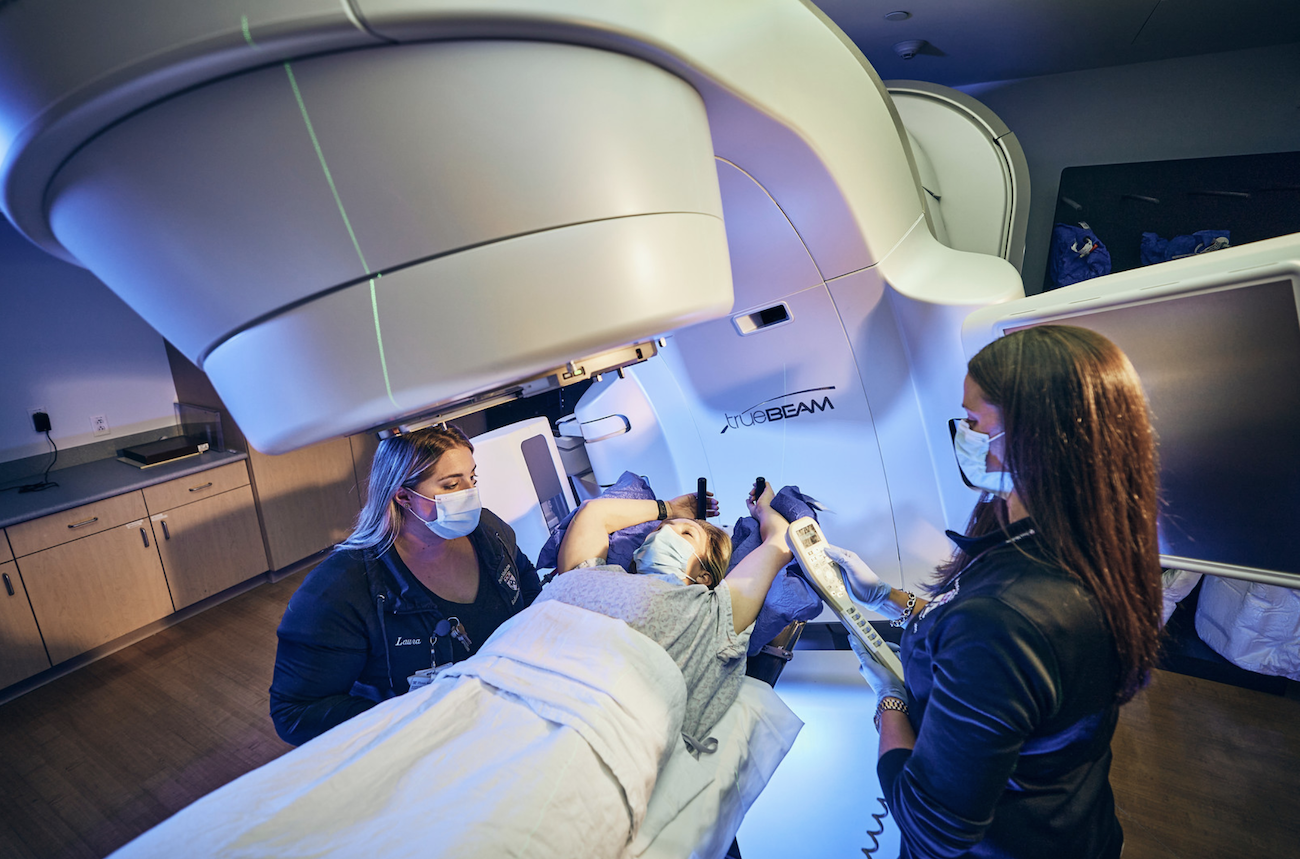Fractionation and Radiation
What are fractions of radiation?
Radiation therapy is delivered in small doses called fractions. Your radiation oncologist will prescribe a total dose that is divided into smaller doses or fractions. A fraction is given each day and repeated over many days to add up to the total dose of radiation. The amount of radiation you receive is measured in centigray or cGy.
Your healthcare provider will tell you the number of fractions you will get and how your radiation will be given. The following factors will help your providers decide how to best treat your cancer:
- Type of cancer.
- Size and location of your tumor.
- Your general health.
- How well your body does with the treatment.
- Other cancer treatments you are getting.
- If you are enrolled in a clinical trial.
How are fractions given?
There are different ways of dividing the total radiation dose into fractions for your treatment. Some ways are only used in a few cancer types or for certain situations, while others are more common for all cancer types. Your healthcare provider will choose the best method for you. The following are the most common ways of dividing the total dose (fractionation):
Conventional Fractionation
This is the most common type of fractionation used when treating most types of cancer. Typically, conventional fractionation is:
- Doses ranging from 180cGy to 200cGy.
- Given once a day, 5 days a week.
- Given over 6 to 7 weeks.
Hyperfractionation
Cancers treated with hyperfractionation include head and neck and breast. Hyperfractionation divides the same total dose into more fractions by giving:
- Smaller doses per fraction.
- Twice a day treatment (6 hours or more apart).
- The same number of treatment days and weeks as conventional fractionation.
Hypofractionation
Cancers treated with hypofractionation are lung, breast, prostate, and gynecologic cancers. It is also used for palliative radiation and any type of cancer treated with stereotactic radiation therapy (SBRT). Hypofractionation can make the treatment course much shorter by delivering:
- Higher treatment doses per fraction.
- Treatments once a day or less often.
- Fewer days and weeks of treatment than conventional radiation.
Accelerated Fractionation
Accelerated fractionation is commonly used when treating breast cancers, head and neck cancers, and stem cell transplant patients (TBI or total body irradiation). Accelerated fractionation is:
- Given in smaller doses and more than once a day.
- Sometimes outside of normal treatment days, such as Saturdays or Sundays.
- The total dose of radiation is given over a shorter period (fewer days).
Palliative Treatment Fractionation
Palliative treatment fractionation can be used for all disease types. It is used to manage symptoms of cancers that are not curable. Palliative treatment fractionation often includes:
- Higher doses for the first 3 treatments to relieve symptoms quickly. The dose for the first 3 treatments is often between 350cGy to 400cGy.
- Doses given after the first 3 fractions are about 200cGy per fraction.
In some cases, shorter treatment courses can be just as effective as longer courses. Talk to your radiation oncologist about which fractionation method is right for you and your cancer treatment.
